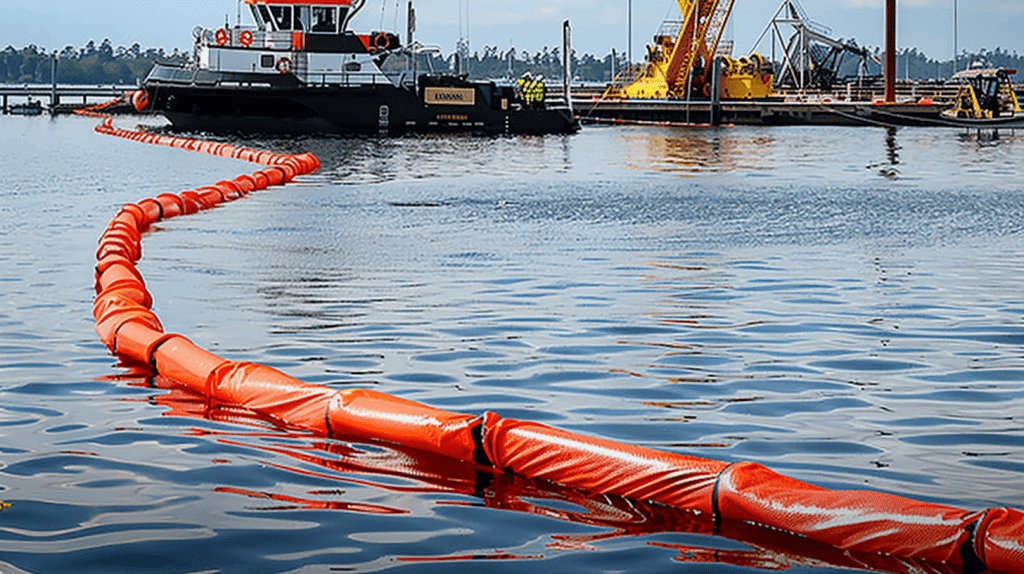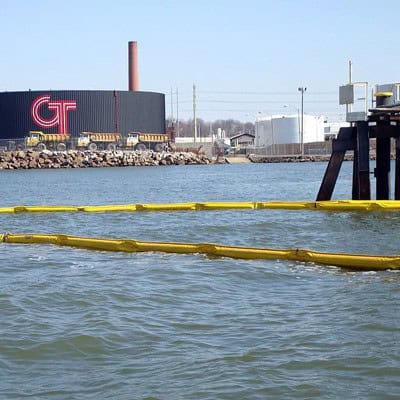Oil spill containment regulations are designed to prevent and manage spills in waterways. These rules are crucial for minimizing environmental damage and ensuring the safety of ecosystems and communities. Without these guidelines, the risk of devastating spills increases, threatening the health of marine and terrestrial life, as well as human populations. Let’s explore some of the primary regulations you need to be aware of. Knowing these regulations not only helps in compliance but also fosters a proactive approach to environmental stewardship.
The Clean Water Act
The Clean Water Act (CWA) is a cornerstone of U.S. environmental regulation. It aims to restore and maintain the integrity of the nation’s waters. Under the CWA, facilities must have measures in place to prevent oil spills and have a response plan ready in case of a spill. This act has been instrumental in reducing pollution and protecting water resources across the United States. Furthermore, the CWA encourages continuous monitoring and improvement of water quality, ensuring that the nation’s waterways remain a viable resource for future generations.
Oil Pollution Act of 1990
Enacted after the Exxon Valdez oil spill, the Oil Pollution Act of 1990 (OPA) strengthened the EPA’s ability to prevent and respond to catastrophic oil spills. The OPA requires facilities to prepare Facility Response Plans (FRPs) that detail how they will respond to oil spill emergencies. The OPA also established a trust fund, financed by a tax on oil, to provide resources for cleaning up spills when the responsible party is unable or unwilling to do so. This act marked a significant shift in how oil spills are managed, emphasizing both prevention and accountability.
Spill Prevention, Control, and Countermeasure (SPCC) Rule
The SPCC Rule, part of the CWA, mandates that facilities develop, maintain, and implement an oil spill prevention plan. The plan should include measures for spill prevention, control, and countermeasures to mitigate the effects of a spill. Facilities must regularly review and amend these plans to address any changes in operations or risk levels. By focusing on prevention and preparedness, the SPCC Rule aims to minimize the likelihood and impact of oil spills, safeguarding both human health and the environment.

Key Components of Compliance
Compliance with oil spill containment regulations involves several critical components. Understanding these can help ensure that your facility is prepared to handle oil spill incidents effectively. Compliance not only protects the environment but also shields businesses from potential fines and legal issues. Here, we break down the essential elements of compliance to help facilities maintain readiness and accountability.
Facility Response Plans (FRPs)
Facility Response Plans are essential for regulatory compliance. An FRP should outline your facility’s strategy for dealing with oil spills, including identifying resources, response actions, and communication plans. Regularly updating and practicing your FRP is crucial for preparedness. These plans should be tailored to the specific risks and conditions of each facility, ensuring a rapid and effective response in the event of a spill. Additionally, involving local authorities and emergency services in your planning process can enhance coordination and effectiveness during an actual incident.
Oil Absorbent Booms
Oil absorbent booms are a vital tool in oil spill containment. They help contain and absorb oil on the water’s surface, preventing it from spreading further. Incorporating oil absorbent booms into your spill response plan is a practical step towards compliance and environmental protection. Proper deployment and maintenance of these booms are essential for their effectiveness, necessitating regular training and inspections. Using high-quality materials and ensuring an adequate supply of booms can significantly enhance a facility’s spill response capabilities.
Training and Drills
Regular training and drills are essential to ensure that your team is ready to respond to an oil spill. Training should cover the use of equipment, safety procedures, and the execution of the FRP. Conducting drills helps identify any weaknesses in your response plan. These exercises not only improve response times but also build confidence among staff, ensuring a calm and coordinated effort during a real spill. Moreover, feedback from drills can lead to valuable improvements in both plans and equipment, further strengthening spill response strategies.
The Role of Regulatory Agencies
Several regulatory agencies play a role in enforcing oil spill containment regulations. Understanding their roles can help you navigate the regulatory landscape more effectively. These agencies provide guidance, oversight, and enforcement, ensuring that facilities adhere to established standards. By working closely with these agencies, businesses can gain insights into best practices and emerging trends in spill prevention and response.
Environmental Protection Agency (EPA)
The EPA is the primary agency responsible for enforcing oil spill regulations. It oversees compliance with the CWA, OPA, and SPCC Rule. The EPA conducts inspections and can impose penalties for non-compliance. Beyond enforcement, the EPA also offers resources and guidance to help facilities develop and implement effective spill response plans. Staying informed of EPA updates and participating in their training programs can further enhance a facility’s compliance efforts.
U.S. Coast Guard
The U.S. Coast Guard is responsible for managing oil spill responses in coastal and navigable waters. They coordinate response efforts and ensure that facilities comply with federal regulations. The Coast Guard also provides valuable assistance during spill incidents, deploying resources and expertise to contain and mitigate spills. Collaboration with the Coast Guard can strengthen a facility’s preparedness, ensuring a swift and effective response in maritime environments.
State and Local Agencies
State and local agencies may have additional regulations and requirements for oil spill containment. It’s essential to be aware of these and ensure compliance with all applicable rules. These agencies often have a more nuanced understanding of local environmental conditions and can provide tailored guidance and support. Engaging with state and local authorities can enhance a facility’s compliance strategy, fostering a cooperative approach to spill prevention and response.

Best Practices for Regulatory Compliance
To ensure compliance with oil spill containment regulations, consider implementing the following best practices. These practices not only enhance regulatory adherence but also promote a culture of safety and environmental responsibility within your organization. By adopting a proactive approach, facilities can mitigate risks, reduce environmental impacts, and demonstrate their commitment to protecting natural resources.
Regular Risk Assessments
Conduct regular risk assessments to identify potential oil spill hazards at your facility. This will help you implement necessary preventive measures and update your response plan as needed. These assessments should be comprehensive, taking into account changes in operations, equipment, and personnel. By systematically identifying and addressing risks, facilities can significantly reduce the likelihood of spills and enhance their overall preparedness.
Maintain Equipment
Ensure that all spill response equipment, including oil absorbent booms, is well-maintained and ready for use. Regularly inspect and replace equipment as necessary to ensure its effectiveness. Implementing a routine maintenance schedule can prevent equipment failures and ensure that your facility is always ready to respond to a spill. Investing in high-quality equipment and providing ongoing training for staff can further enhance response capabilities.
Document Everything
Keep detailed records of your spill response plans, training sessions, drills, and equipment maintenance. Documentation is crucial for demonstrating compliance during inspections or audits. Comprehensive records not only satisfy regulatory requirements but also provide valuable insights for continuous improvement. By regularly reviewing and updating documentation, facilities can identify trends, address weaknesses, and enhance their spill prevention and response strategies.
Foster a Culture of Safety
Promote a culture of safety within your organization. Encourage employees to report potential hazards and provide ongoing training to reinforce the importance of oil spill prevention and response. Creating an environment where safety is prioritized can lead to more vigilant and proactive employees, reducing the risk of spills. Regularly communicating the importance of compliance and environmental protection can further embed these values within your organization’s culture.
Conclusion
Staying compliant with oil spill containment regulations is essential for protecting our waterways and minimizing environmental damage. By understanding key regulations, implementing effective response plans, and fostering a culture of safety, you can ensure that your facility is prepared to handle oil spill incidents responsibly. Remember, proactive measures and regular training are your best allies in achieving regulatory compliance and safeguarding the environment. Ultimately, by prioritizing compliance and environmental stewardship, businesses can contribute to a healthier, more sustainable future for all.
Take Action: Shop at Absorbents Online for Oil Absorbent Booms
Ensure your facility is prepared for any oil spill incident by investing in high-quality oil absorbent booms. At Absorbents Online, you can find a wide range of absorbent products designed to help you effectively contain and manage spills. Don’t wait for an emergency—equip your facility with the best tools for spill response today! Visit https://www.absorbentsonline.com to explore our selection and make your purchase. Protect the environment and ensure compliance with regulations by taking proactive steps now!